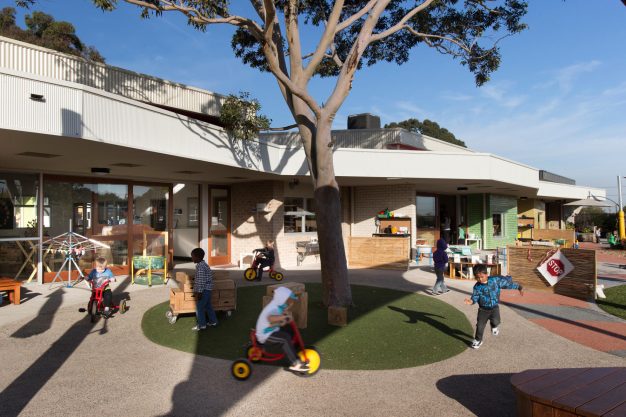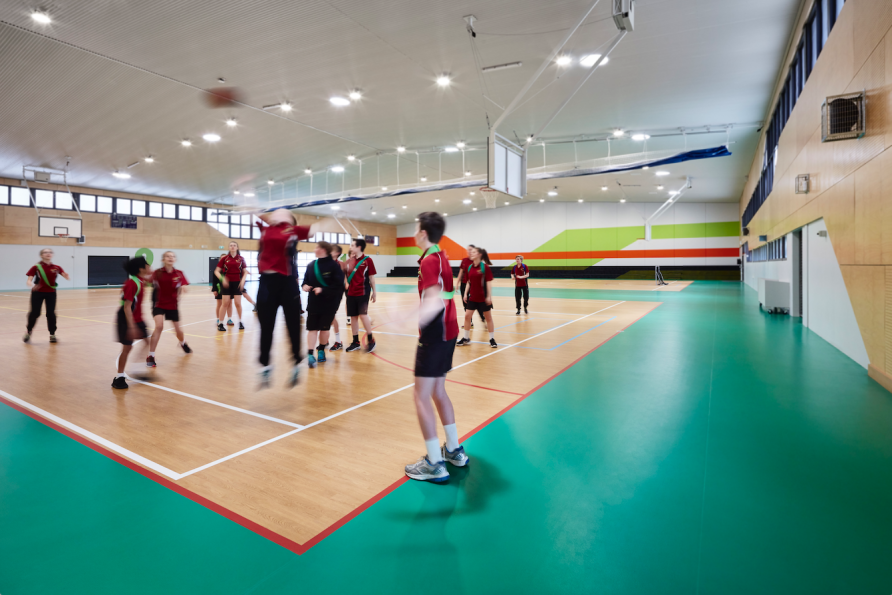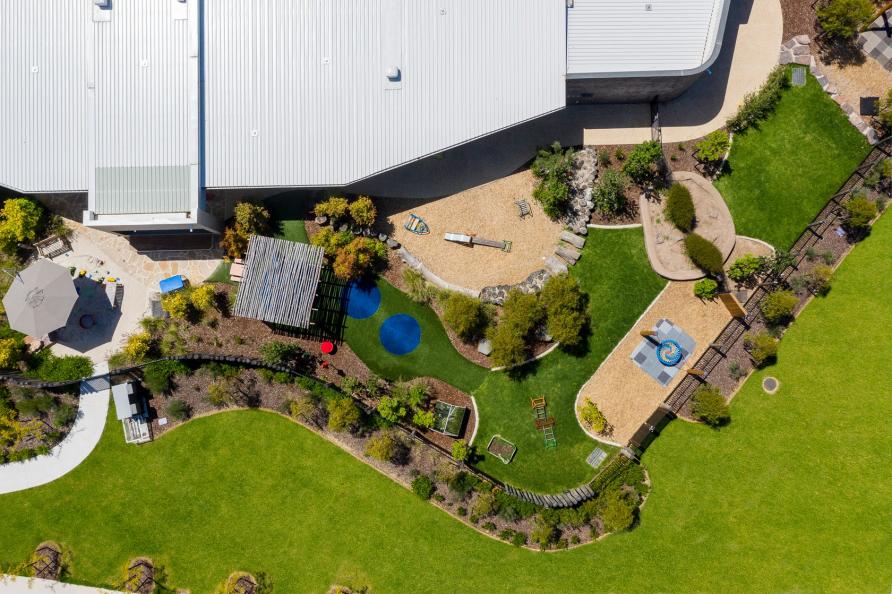
Building stronger connections between schools and communities in Melbourne
When the COVID-19 pandemic forced schools to close in 2020, the staff at Doveton College in Melbourne picked up the phone.
“Our staff made over 19,000 phone calls during the second lockdown,” says the school’s principal Debra Gibson. “We were checking that families were doing okay and coping – it was about more than just keeping kids learning.”
As students started learning remotely, many people realised how vital our schools are as sites of community connection – not only for students but for families, carers and members of the broader community as well.
Of course, schools have always been at the heart of Australian communities. However, many are rarely used outside of hours, on weekends or during school holidays, making them some of Australia’s most underutilised assets, write Associate Professor Clare Newton, Associate Professor Ian McShane, Dr Benjamin Cleveland, Dr Philippa Chandler, Dr Ruth Aston, Professor Janet Clinton and Sarah Backhouse, University of Melbourne.
Across Australia, schools are starting to think more creatively about how they can share facilities with local residents, opening buildings and green spaces to the community as environments where families, young people and the elderly can connect and flourish.
Recently, the World Health Organization and UNESCO launched a global initiative for every school to adopt a whole-school approach to promoting health and education. This is underpinned by eight global standards, including developing school and community partnerships.
Attaining this standard involves schools engaging more with families and local communities, hosting activities that act as ‘social glue’ and guiding individuals and groups towards realising their highest potential.
The current pandemic has intensified this imperative and cemented the idea that schools are central to community functioning.
 Indoor sporting facilities at Officer Secondary College, by Clarke Hopkins Clarke Architects, were developed in partnership between the Victorian Government and Cardinia Shire. Picture: Rhiannon Slatter.
Indoor sporting facilities at Officer Secondary College, by Clarke Hopkins Clarke Architects, were developed in partnership between the Victorian Government and Cardinia Shire. Picture: Rhiannon Slatter.
Our research project Building Connections: Schools as Community Hubs aims to better understand the necessary conditions to successfully develop, implement and sustain schools as community hubs.Read more
The project will provide evidence-based guidance to help practitioners and policy-makers establish successful ‘schools as community hubs’ underpinned by innovative partnerships.
Doveton College, mentioned above, is a renowned example of a community hub school. Located in Melbourne’s southeast, the college was created by the Victorian State Government in collaboration with The Coleman Foundation and opened in 2012 as a Prep to Year 9 school with integrated family and children’s services.
It features child and maternal health services, childcare and early years education, playgroups, visiting medical and allied health services, adult education classes, community sporting facilities, a food technology kitchen, and community facilities for adults to use technology, interact socially and engage with the community team.
Doveton College’s facilities are safely accessed during and outside of school hours, enabled by careful design and operation. By situating these programs and services in one place, early assessment, intervention and prevention are available to children, families and carers in need of additional support.
Based on the Doveton College experience, the organisation Our Place was created to champion and help deliver ‘school as community hub’ initiatives in 10 additional schools in Victoria, further expanding the opportunities available to children and families in disadvantaged communities.
In Queensland, the Yarrabilba Family and Community Place opened in 2018 on the grounds of Yarrabilba State School. In a new community, the purpose-built community facility has the relaxed atmosphere of a lounge room.
The programs and services offered focus on inclusive and flexible health, education and social services. These are offered in a safe and supportive environment that encourages community connectedness and improves outcomes for children, families and the broader community.
Strengthening connections
Secondary schools are also increasingly being thought of as community hubs. In South Australia, Whyalla Secondary College is being built between a regional campus of UniSA and TAFE (Technical and Further Education) facilities.
It aims to strengthen connections between education sectors and create an integrated education hub that will support secondary students’ pathways into higher education and vocational training.
The school will replace three existing high schools and accommodate 1500 students, including those with a disability. Extensive indoor and outdoor sporting facilities and a performing arts centre will be available for community use.
High schools are also being integrated in Shepparton, Victoria, to create Greater Shepparton Secondary College. Set to open in 2022, this single campus school for 2700 students will feature extensive facilities, many of which will be shared with local groups, including parents and carers, health and wellbeing providers, local businesses, performing arts groups, sporting associations, and other education providers, including the TAFE sector, and higher education.
A key objective of the campus’ planning and design is to facilitate partnerships with local organisations and services. Developing insights into how best to open the school gates to families and the wider public – both metaphorically and literally – requires an interdisciplinary approach.
Our team from universities, government and industry bring together expertise from a range of sectors including education, architecture, urban planning, human geography, public health, evaluation and wellbeing science.
By identifying and sharing success stories and pitfalls, the Building Connections project will inform decisions about how to plan, design, govern and manage schools to operate successfully as ‘more than a school’, encouraging the development of resilient and connected communities.
Later this year, the team will launch the nationwide Connecting Schools + Communities Survey to gather insights from Australian school principals, school facility managers and other school leaders in wellbeing and community development about how and why they share their facilities with the broader community.
 The Korayn Birralee Family Centre in Corio, by Brand Architects, is a collaboration between the City of Greater Geelong, the Victorian Government, Our Place and Northern Bay P-12 College. Picture: Rachel Dere/Blue Tree Studios.
The Korayn Birralee Family Centre in Corio, by Brand Architects, is a collaboration between the City of Greater Geelong, the Victorian Government, Our Place and Northern Bay P-12 College. Picture: Rachel Dere/Blue Tree Studios.
The first of its kind in Australia, the survey aims to improve guidelines for schools on sharing facilities with the community, inform the design of new schools and school upgrades to afford better learning and community sharing, and help shape education and funding policies for school facilities, school-community initiatives and related staff roles.
At Doveton College, the school leaders are reflecting on how COVID-19 changed the school’s relationship with the community.
“As challenging as the past 18 months have been, in some ways COVID was a gift,” says Principal Debra Gibson “because families became more involved with their kids learning. We can’t wait to build on that.”
To register your interest in the Building Connections project and the Connecting Schools + Communities Survey, join the email list.
This article was first published on Pursuit, University of Melbourne. Read the original article.




